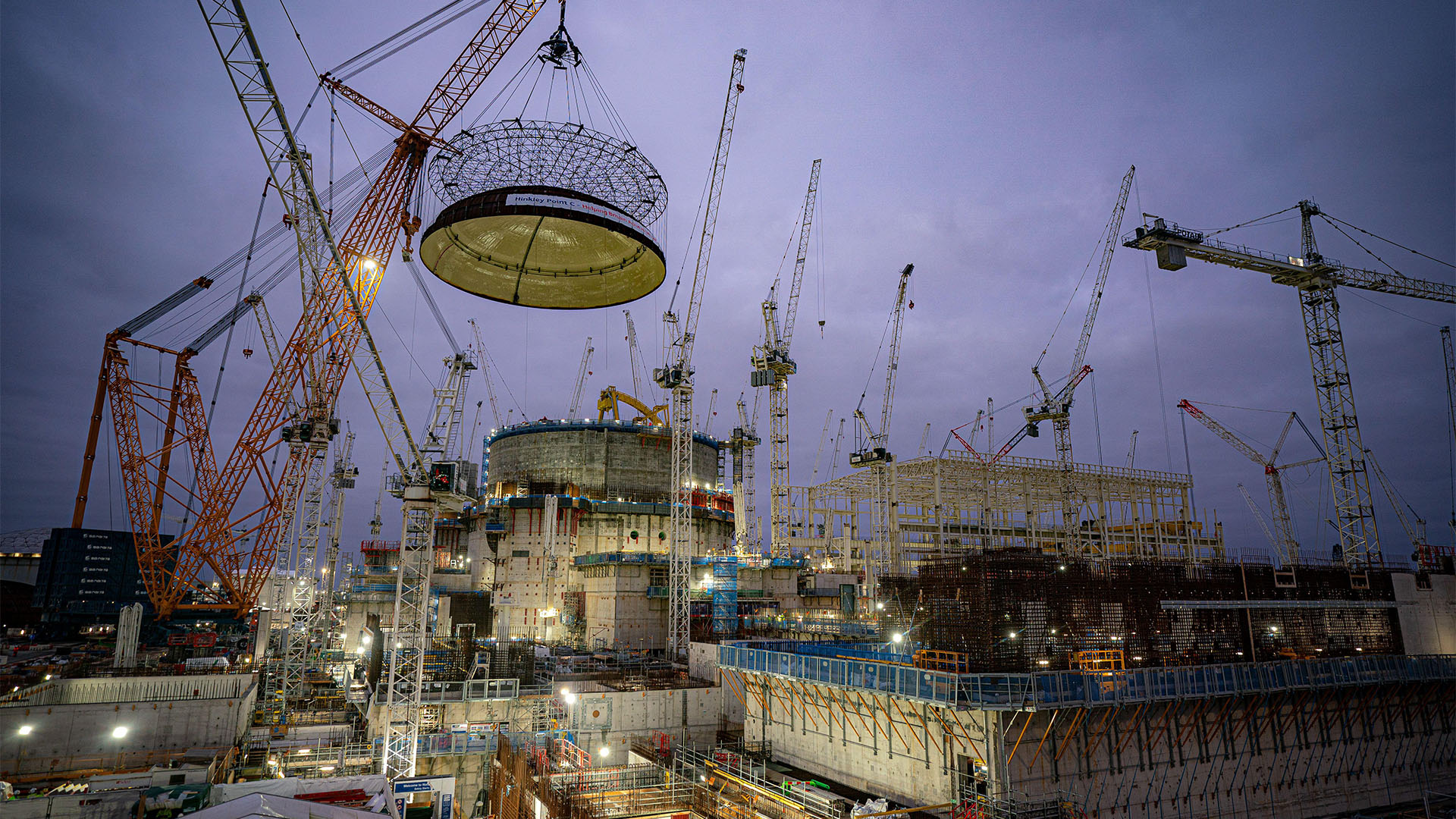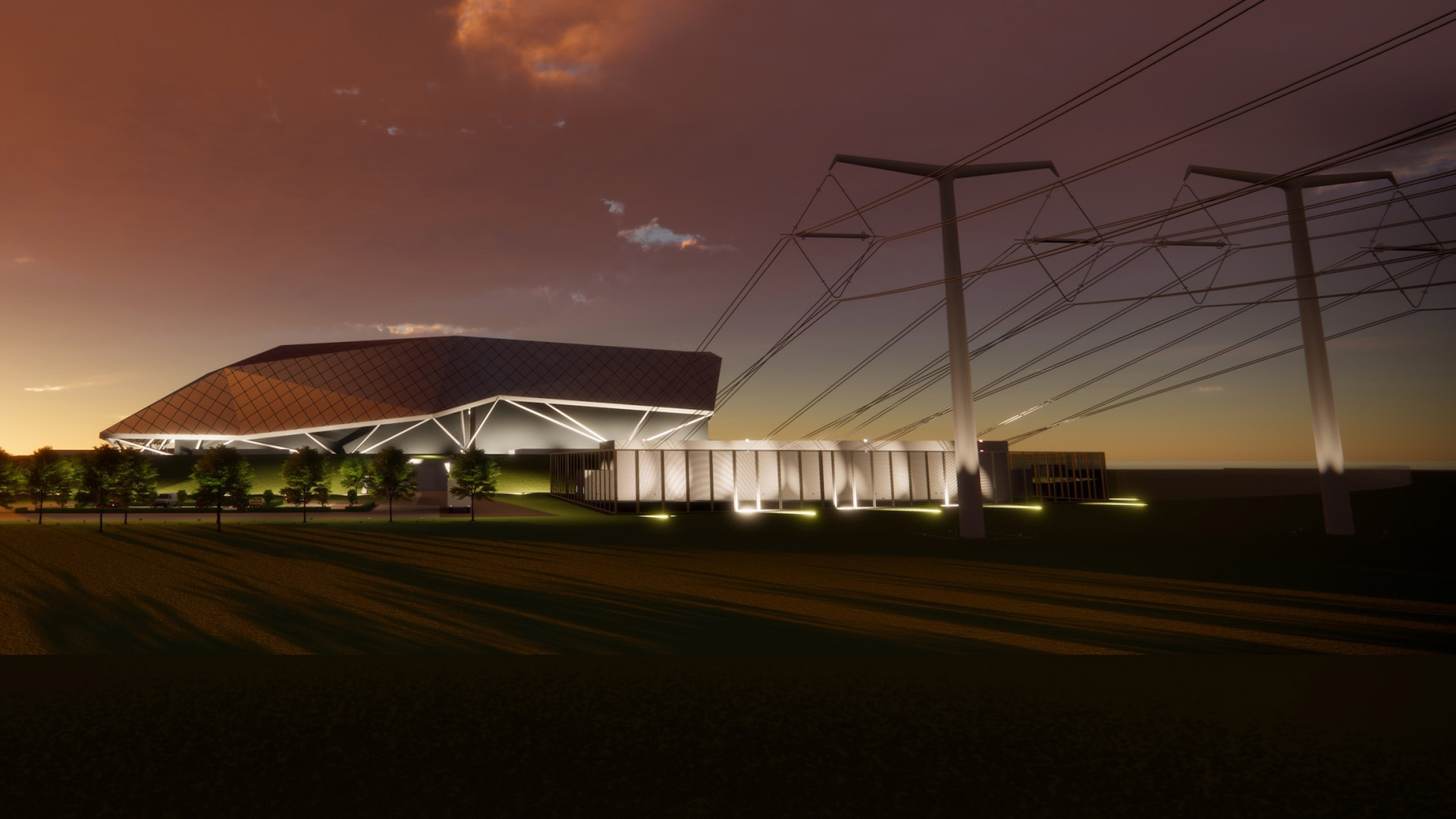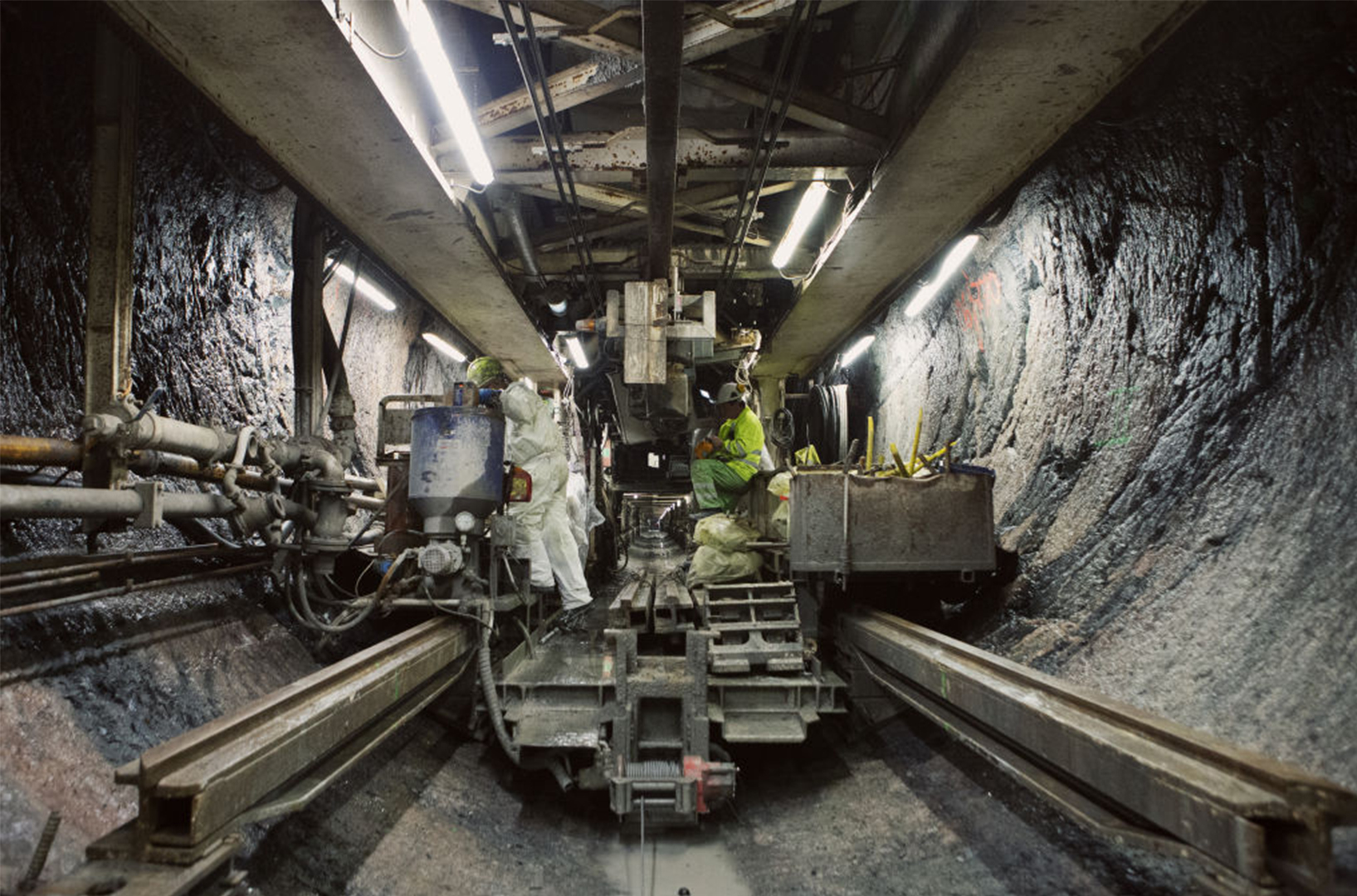
A render of a proposed design of a Rolls-Royce SMR
Back in 2006, then British Prime Minister Tony Blair called the UK’s failure to build new nuclear power stations a “dereliction of duty”.
Just nine months later, energy giant EDF put forward a proposal to build a new nuclear plant which would be ready to go by 2017. By 2012, the budget had been set at £16bn for a cutting-edge European Pressurised Reactor at Hinkley Point in Somerset, south-west England. It could provide up to 7% of the nation’s electricity – but its operational date had already been pushed back to 2019.
A year later, 2023 was given as the earliest Hinkley Point C would produce power and, 12 years on, the project is now expected to cost up to £46bn and not produce power until 2031.
A report last year estimated that there had been about 7,000 substantial design changes to the initial plans since the build was conceived, each contributing to the ballooning price tag. While few would argue with the need for decarbonised, sovereign energy, there are not many that would regard the soaring costs and lengthy delays of Hinkley Point C as the way of achieving it.
What if, instead of building a large nuclear plant, each component of which is bespoke, we could deploy a series of ready-to-go, smaller plants that could be rolled out across the country? This is the theory behind small modular reactors (SMRs), and the Chancellor’s spending review recently gave the green light to Rolls-Royce to build them. It was one of four companies vying to produce SMRs in the UK and it is estimated that an SMR will cost in the region of £1.8bn, a fraction of the bloated budget of Hinkley Point C.
So how can it be done? “The most important bit of SMR is the ‘M’ – they’re modular, they can be manufactured,” says an industry source who asked not to be named. “At Hinkley, they have had to build sheds just to weld everything on site. With an SMR, you build everything in a factory and deliver it to site. It’s a system that becomes increasingly efficient. Your construction risk is significantly decreased.”

The world's largest crane - Big Carl - lifts a 245-tonne steel dome onto Hinkley Point C's first reactor building, at the nuclear power station construction site in Somerset in 2023.
Great British Energy - Nuclear
A government-owned body that covers England and Wales, Great British Energy - Nuclear (GBEN), will oversee the early genesis of SMRs. It has acquired two sites that were originally owned by the nuclear arm of Japanese company Hitachi, for development, at Wylfa on Ynys Môn (Anglesey) in north Wales and Oldbury-on-Severn in Gloucestershire, south-west England.
These are destined to be the first to host SMRs and two different models will be developed and tested. Eventually, the government has ambitions to scale up production having set a target of 24GW of nuclear energy by 2050. SMRs have an output of up to 300MW (although Rolls-Royce says its model could generate 470MW), whereas a facility such as Hinkley Point C should be able to produce 3.2GW. As will the similarly sized (and equally blighted) Sizewell C in Suffolk, east England.
“GBEN was set up to give the market confidence [in developing nuclear power],” says the industry source. “The idea is to get the private sector involved. If GBEN gets it right, they could see an SMR coming online every year.”
GBEN is something of a misnomer, however. The Scottish government has rejected building new nuclear plants, based partly on the difficulties experienced at Hinkley Point. Northern Ireland has never had a nuclear power station and, with no current infrastructure or specialist workforce to support development, together with a prohibition against nuclear plants in the Republic of Ireland, is unlikely to have one any time soon.
Nevertheless, GBEN sees SMRs as a way of boosting jobs both within the manufacturing and running of SMRs but also within high-energy consumption industries, such as datacentres, which could be attracted to countries with a source of reliable energy production. Canada recently announced that it was commissioning four SMRs in Ontario, but the UK is likely to be the first country to harness the technology in Europe.
If GBEN’s plans to roll out a series of SMRs are realised, it could place the UK at the forefront of SMR technology in Europe and potentially the western world. (China has already forged ahead with the deployment of its own design of SMRs.)
“We’re very excited about SMRs,” says Jason Dreisbach, portfolio director for advanced energy technologies at the engineering giant AtkinsRéalis which has been working on the Canadian proposals. “They’re another opportunity to mitigate climate change. [They could suit] areas where there is less land available or where the demand is very localised, like rural Canada.”
The size of SMRs certainly makes them more flexible in terms of location. Rolls-Royce has calculated that an SMR will require just over five acres of land per unit. By comparison, Hinkley Point C sits on 430-acre site and Sizewell C covers 80 acres.
Although the plan is to have several SMRs which could be dotted around the country – current UK Prime Minister Keir Starmer has spoken about “ripping up archaic rules” to allow them to be imposed in new areas – it is much more likely that instead of building a mega 3.2GW plant, several SMRs will be located on one site which already has a nuclear heritage. This will ensure that the specialist skills are already in place, and that locals are familiar with and less likely to be bothered by nuclear energy generation.
Regardless of location, if one SMR is hit by a technical or structural problem, its neighbouring reactors should be able to carry on – meaning that interruptions in output are minimal. If, and it is a very big if according to the nuclear industry, something goes catastrophically wrong, then any potential disaster is much easier to contain in an SMR compared to a mega-plant.
“SMRs could suit areas where there is less land available or where the demand is very localised” Jason Dreisbach, AtkinsRéalis

A render of the proposed design of a Rolls Royce SMR attached to the National Grid.
More stable energy costs
If Chernobyl, the Ukrainian nuclear plant that exploded in the 1980s, turned many against nuclear power for decades, the Ukrainian war has, ironically, led many to rethink their stance. The soaring energy costs that many European countries experienced, after their boycott of Russian fuel imports, has underlined the importance of energy sovereignty. With renewables only likely to provide a proportion of many nations’ needs, nuclear has become far more attractive.
There are nay-sayers who are unconvinced by largely unproven SMR technology. They are unpersuaded that SMRs will create cheaper electricity, arguing that a manufacturer would have to produce dozens of units to create efficiencies, and that some overheads, such as security, increase with a greater number of smaller facilities rather than single large plants.
“There’s always going to be room for both traditional gigawatt plants and SMRs,” says Dreisbach. “There are economies of scale with gigawatt facilities but SMRs fill some gaps. One of the advantages of SMRs is some of the infrastructure from traditional plants could be used for them but they’re not a replacement. We need both types.”
Nevertheless, in Britain at least, the SMR push has been championed by both the former Conservative government and now has been a crucial building block in the current Labour government’s energy policy.
“It’s a triple whammy,” says the industry source. “Nuclear provides the lowest carbon energy, it keeps crucial assets on British soil and the nuclear fuel supply chain is very resilient coming from Canada and Australia. They’re countries which we’re not likely to fall out with any time soon. The first SMRs won’t be easy but, if we’re serious about net zero, then this is a major contribution towards that target.”


